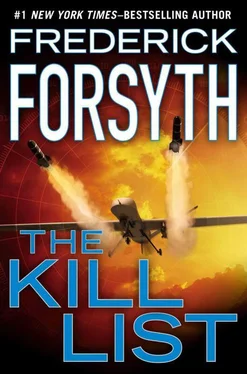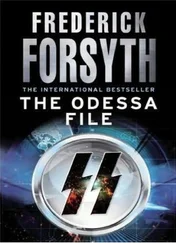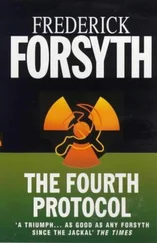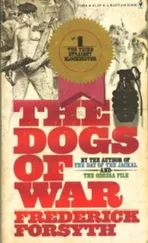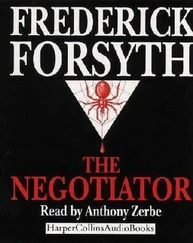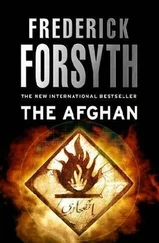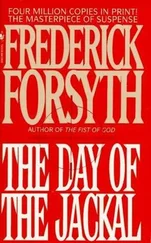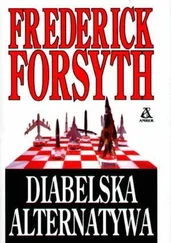It was where, in the autumn of 1972 after the summer slaughter of Israeli athletes at the Munich Olympics, Zvi Zamir had ordered his kidonim (bayonets) to go out, find and kill the Black September fanatics responsible. Such was the decision by Prime Minister Golda Meir to launch Operation Wrath of God. Over forty years later, it was still shabby.
The men were of different ranks and ages but only used first names. The oldest had been there twenty years and needed only the fingers of one hand to recall the times he had heard surnames. The grizzled director was Uri, the chief of operations was David and the youngest, running the Horn of Africa desk, Benny.
“The Americans are asking for our help,” said Uri.
“Surprise me,” muttered David.
“It seems they have tracked down the Preacher.”
He had no need to explain. Jihadi terrorism has several targets for its violence, and Israel is far up the list, along with the U.S. Everyone present knew of the top fifty in the world, even though Hamas to their south, Hezbollah to their north and Iran’s al-Quds thugs to their east jostled for first in the queue. The Preacher’s sermons might target America and Britain, but they knew who he was.
“It appears he is in Somalia, sheltering with al-Shabaab. Their request is very simple: Do we have an asset implanted in South Somalia?”
Both senior men looked at Benny. He was a former member of the elite Sayeret Matkal commando, fluent in Arabic to the point where he could pass unnoticed across the border, and thus one of the mistaravim . He studied the pencil in his hands.
“Well, Benny, do we?” David asked gently. They all knew what was coming, and agent runners hate to lend one of their assets for a foreign agency’s concerns.
“Yes, we do. Just one. He is embedded in the port of Kismayo.”
“How do you communicate with him?” asked the director.
“With extreme difficulty,” said Benny. “And slowly. It takes time. We can’t just send in a message. He can’t send a card. Even e-traffic could be monitored. There are trainee bombers in there now. Western-educated. Technology-savvy. Why?”
“If the Yankees want to use him, we would have to speed up communications. A miniaturized two-way transceiver,” said David. “And it ought to cost them.”
“Oh, it would cost them, all right,” said the director. “But you could leave that to me. I’ll tell them ‘maybe,’ and we’ll discuss price.”
He did not mean money; he meant help in a score of other ways — the Iranian atomic bomb program, the release of very high-tech classified equipment. He would have quite a shopping list.
“Does he have a name?” asked David.
“Opal,” said Benny. “Agent Opal. He’s a tally clerk on the fishing dock.”
* * *
Gray Fox did not waste time.
“You’ve been talking to the Israelis,” he said.
“True. Have they come back?”
“With a vengeance. They have a man. Deep inside. In Kismayo, as it happens. They are prepared to help, but there are outrageous demands. You know the Israelis. They don’t give away sand in the Negev.”
“But they want to discuss price?”
“Yes,” said Gray Fox, “but not at our level. It’s above our pay grade. Their top man at the embassy went straight to the commander of J-SOC.”
“Did he turn them down?”
“Amazingly, no. Demands acceded. You can go ahead. Your contact man is their head of station. Do you know him?”
“Yes. Fleetingly.”
“Well, you can go ahead. Tell them what you want and they’ll try to deliver.”
* * *
There was a message from Ariel when he got back to his office.
“There seems to be one purchaser of Somali fruit, vegetables and spices. A company called Masala Pickles. It makes hot chutneys and pickles, the sort the British eat with their curries. The produce is bottled or frozen or canned in a plant in Kismayo, then shipped to the main factory.”
The Tracker rang him. To a listener the exchange would have been meaningless, so he did not encrypt.
“Got your message, Ariel. Well done. Just a detail: Where is the main factory?”
“Oh, sorry, Colonel. It’s in Karachi.”
Karachi. Pakistan. Of course.
A twin-engined, propeller-driven Beech King Air took off before dawn from Sde Dov, the military airfield north of Tel Aviv, turned southeast and began to climb. It passed over Be’er Sheva, flew through the no-fly zone over the atomic plant at Dimona and left Israeli airspace south of Eilat.
Its livery was snow white, with the words “United Nations” down the fuselage. The tailfin bore the large letters WFP for World Food Programme. Had anyone checked its registration number, the latter would have revealed it was owned by a shell company lodged in Grand Cayman and on long-term charter to the WFP. All of which was nonsense.
It belonged to the Metsada (Special Ops) division of Mossad and lived in the Sde Dov hangar that once housed the black Spitfire of Ezer Weizman, founder of the Israeli air force.
South of the Gulf of Aqaba, the King Air followed a course between the landmasses of Saudi Arabia to the east and Egypt/Sudan to the west. It remained in international airspace the length of the Red Sea until it crossed the coast of Somaliland and on over Somalia. Neither state had interceptor facility.
The white plane recrossed the Somali coast with the Indian Ocean north of Mogadishu and altered course southwest to fly parallel to the coast at 5,000 feet and just offshore. Any observer would have presumed it came from a nearby charity/aid base, since it had no external fuel tanks and therefore limited range. That same observer would not have seen that much of the interior was occupied by two huge fuel tanks.
Just south of Mogadishu, the cameraman readied his equipment and began to film after Marka. Excellent images of the entire beach were obtained from Marka to a point fifty miles north of Kismayo, a total stretch involving two hundred miles of sandy shore.
Then the cameraman shut down, and the King Air peeled away. It retraced its flight, switched from internal fuel tanks to main supply and returned home. After twelve hours airborne, it just squeezed in to Eilat airport, refueled and went on to Sde Dov. A motorcyclist took the camera pack to the Mossad’s photographic analysis unit for study.
What Benny wanted, and got, was a clearly unmissable rendezvous spot along the coast road where he could meet Agent Opal with fresh instructions and the necessary equipment. The spot he wanted would have to be unmistakable for someone motoring up the highway and a fast inflatable coming off the sea.
When he had his spot, he prepared his message for Opal.
* * *
Warden Doherty tried to run a decent penitentiary, and, of course, it had a chapel. But he did not want his daughter married there. As the father of the bride, he was prepared to make her day truly memorable, so the ceremony was planned at St. Francis Xavier Catholic Church, with a reception at the Clarendon Hotel downtown.
There had been mentions of the wedding, time and place, in the social diary column of the Phoenix Republic , so it was no surprise that a crowd of both the curious and the well-wishers had gathered outside the doors of the church when the happy couple emerged.
No one paid much attention to the swarthy young man among the crowd, the one with the long white robes and faraway gaze. Not until he burst through the press of onlookers, ran up to the father of the bride with something in his right hand, as if he were offering a gift. It was not a gift; it was a Colt .45 handgun. He fired four times at Warden Doherty, who was thrown backward by the force of the impact and went down in a heap.
Читать дальше
